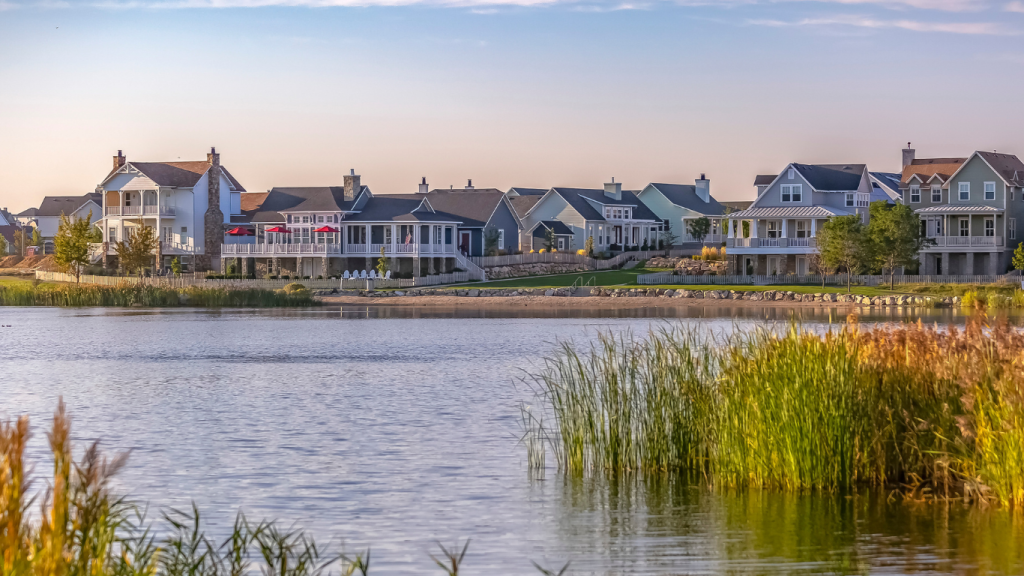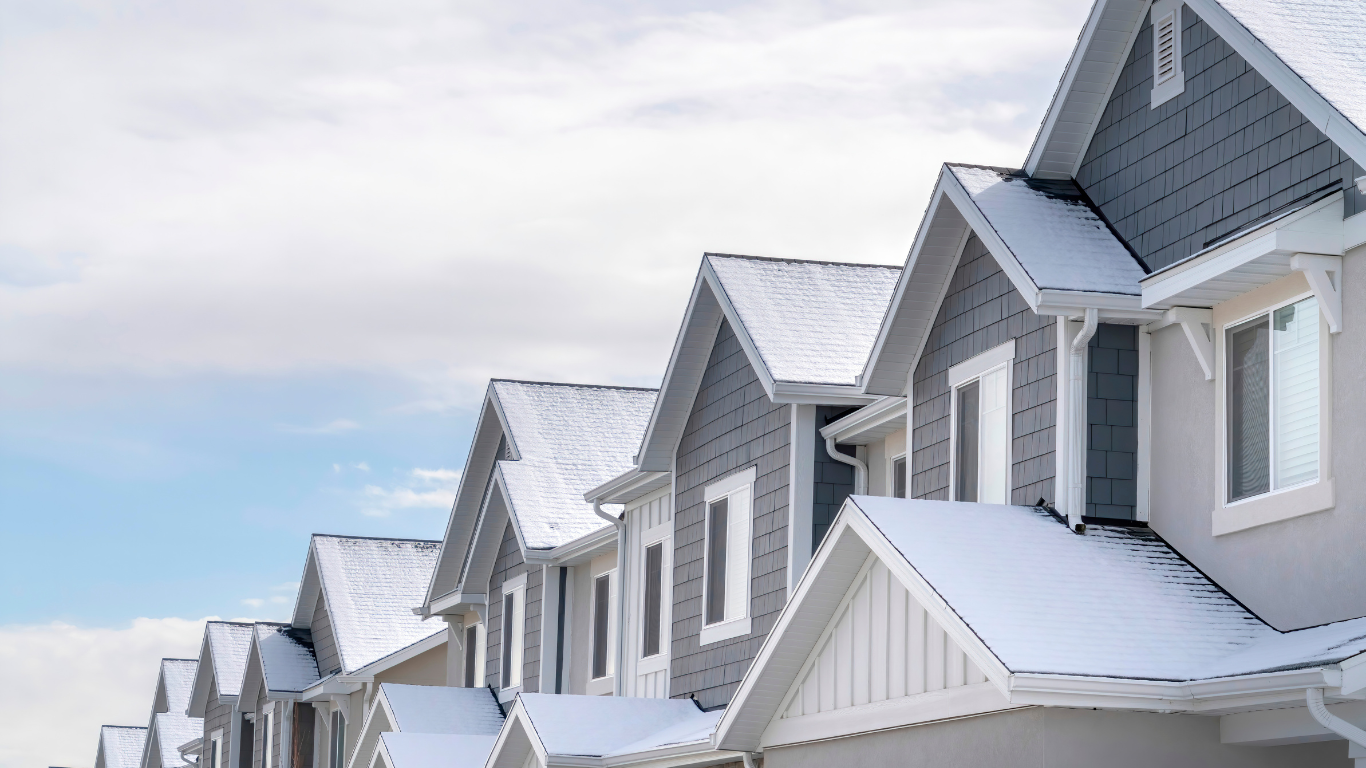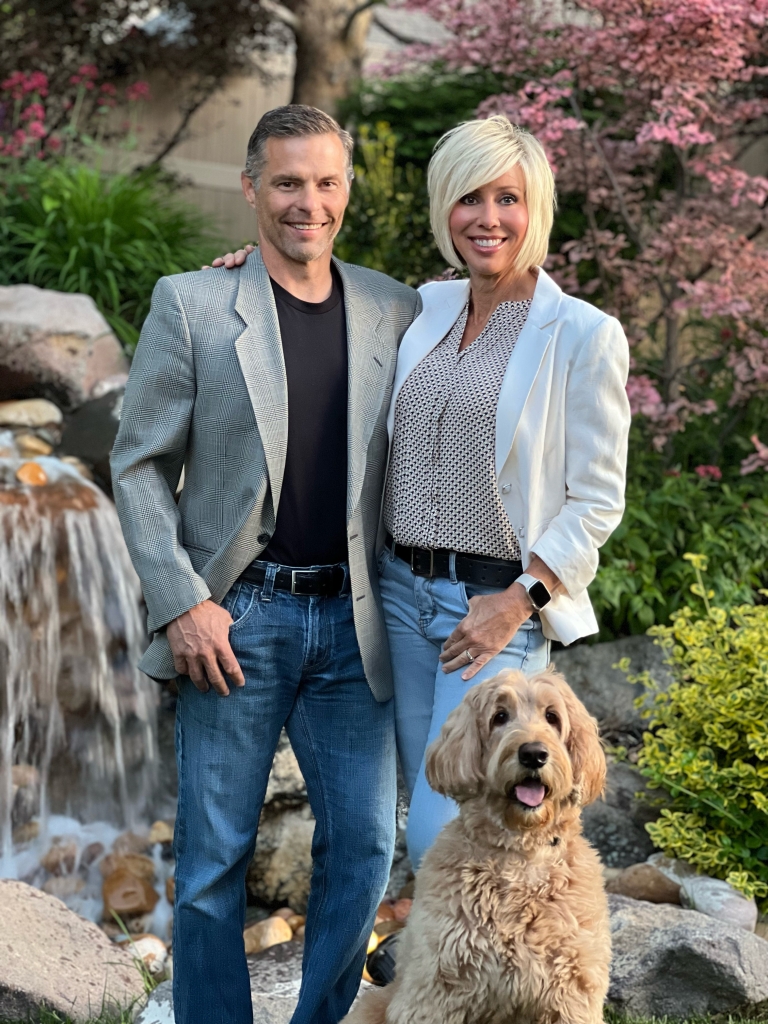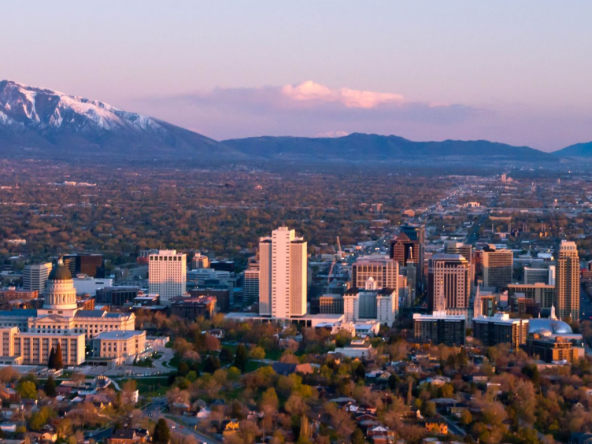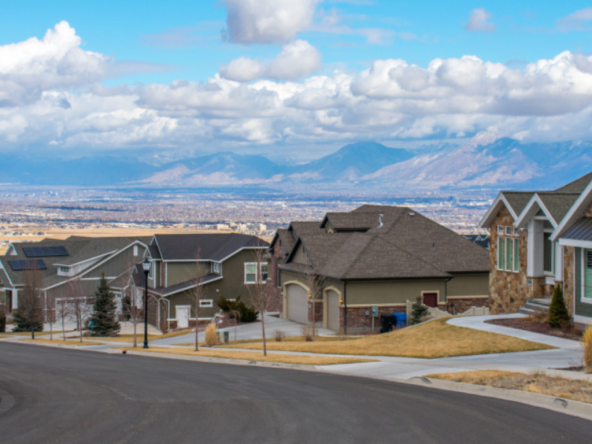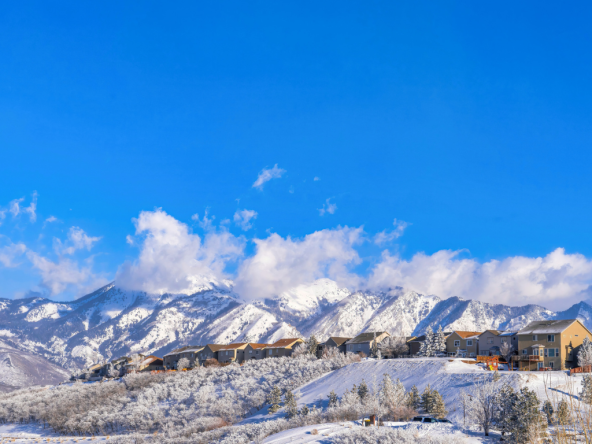One of the fastest-growing cities in Utah and the United States, South Jordan is in the vanguard of an emerging demographic trend. All 10 of the municipalities that experienced the most growth from 2010 to 2020 — at least 44% — are suburbs of larger cities in the South and West, according to the U.S. Census Bureau.
With a population estimated at 87,356 and growing by 3% every year, South Jordan lies along the Jordan River about 18 miles south of Salt Lake City, between the Oquirrh and Wasatch mountains. It’s perfectly situated to offer residents the employment opportunities and leisure attractions of a big city as well as the awesome natural beauty of its elevated environment.
If your kids complain about household chores, telling them about South Jordan’s rugged beginnings should be enough to get them lining up to do the laundry and wash the car. First settled by Mormon pioneers in 1859, the area was originally named Gale because of the strong winds that blew there. For the first settlers, literally carving out a place for themselves in the wilderness, homes were earthen dugouts under the hill above the Jordan River. These pioneers earned their living by raising livestock and growing grain, alfalfa, and later, sugar beets.
By 1914, the farming community had entered the modern era with electricity, a water tank and system for indoor pumping, and an interurban railroad connecting it with larger cities to the north and south. In 1935, South Jordan was finally incorporated as a city, and by 1940, it had 869 residents, according to that year’s census.
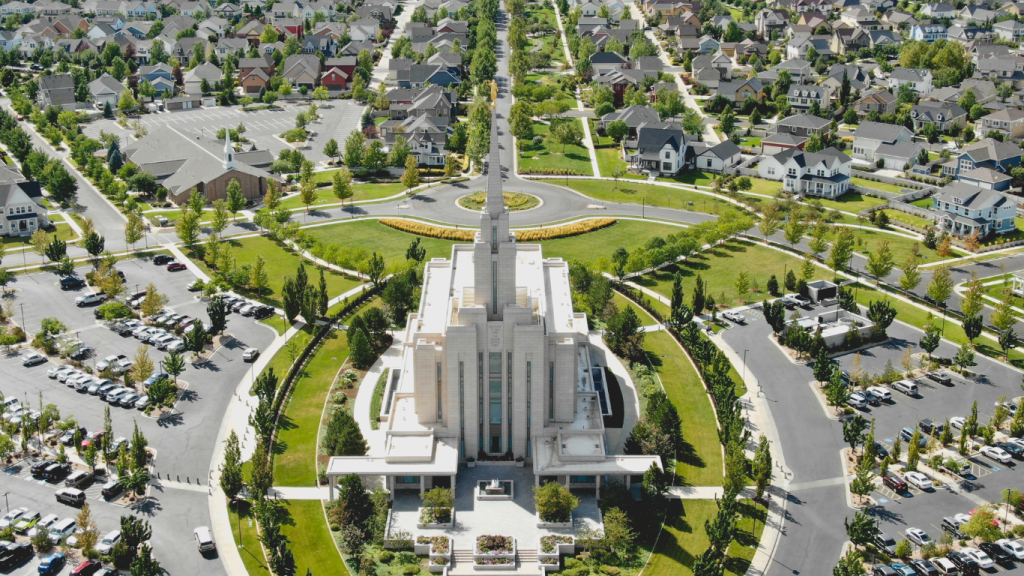
Why Move to South Jordan?
A vibrant city with a youthful outlook and a bright future, South Jordan is a top choice for families and professionals looking to relocate. If you’re starting a family, you’ll feel right at home. The median age here is 31, more than 30% of the residents are under 18, and over 7% of these are younger than 5. It’s a prosperous place with a median household income of $119,822 and an average home value of $684,900, according to the city’s website.
The major occupations for residents of South Jordan, as reported by Data USA, are management, office and administrative support, and sales and related jobs. If you want to pursue a career with one of the area’s major employers, you can apply to companies on Zippia’s list, such as:
- Merit Medical Systems, Inc., which manufactures medical devices used in diagnostic and interventional cardiology and radiology procedures
- Eco Material Technologies, which distributes and provides fly ash and other materials to meet the demand for low-carbon cement alternatives
- InMoment, an innovator in customer experience (CX) intelligence that provides solutions to more than 350 leading brands across 95 countries
- Managed Wealth Financial, a relatively new company founded in 2011 to educate families about creating wealth and making lifestyle changes based on its wealth formula
- Rio Tinto, a leader in mining and exploration that discovers, mines, processes and supplies metals and minerals and is active in more than 40 countries
If you want to launch your own business here, you’ll have plenty of help from South Jordan’s Economic Development team, which, according to the city site, “offers resources and technical expertise in guiding your site selection process,” while the city staff is ready to “handle your development application in a fast, friendly and flexible manner” with its “unique, expedited development approval process that is efficient and fair.”
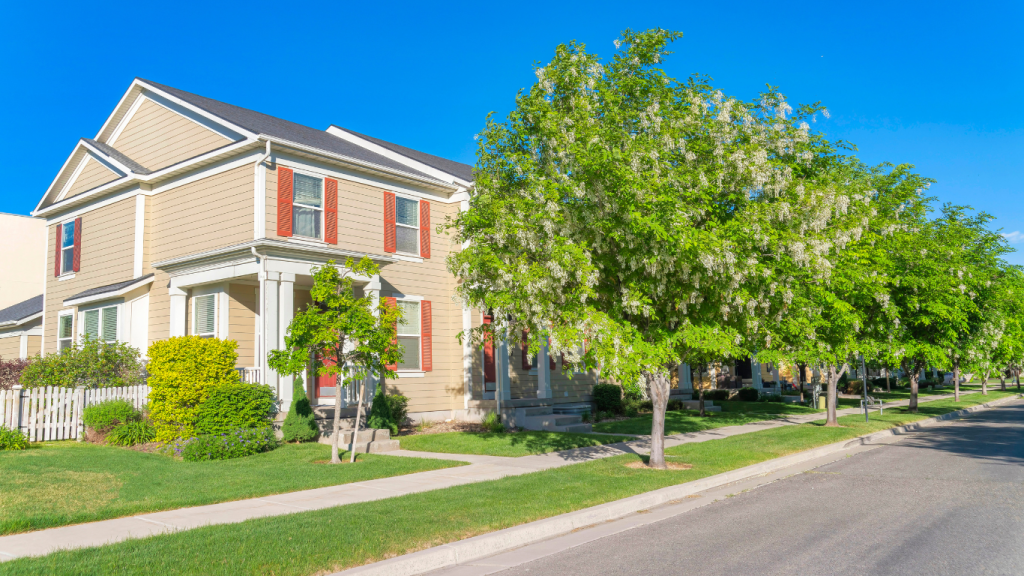
What They Love About Living Here
Here’s what some enthusiastic South Jordan residents had to say in reviews on Niche:
“South Jordan is a super great place to live. I always feel safe when walking through the streets. The schools are great, and this area is super family friendly. I would recommend living here to everyone!”
“South Jordan is a great place to live! Centrally located in the Salt Lake Valley, it is easy to take advantage of the many attractions nearby! Such attractions include movie theaters, restaurants, parks with scenic trails, a lake, a golf course, and the beautiful Oquirrh Mountain Temple with adjoining Park all just minutes away, you’re sure to find fun and beauty whenever you’re itching to get out! The neighborhood is full of friendly people who are always looking to help each other.“
“I’ve lived in South Jordan for 21 years. I love it! Its trails, parks, shopping, families, and fun all nestled in a valley between beautiful mountain peaks.”
“Having moved from Utah County where I grew up my whole life, I’ve been pleasantly surprised by how many pride flags and such I see around my neighborhood, and I didn’t realize how much more welcome that makes me feel. It’s a safe town, though quiet. If you want nightlife, you’ll need to go further to Salt Lake proper, but South Jordan is a great little place to settle down for a while. I just wish housing and such weren’t so expensive.”
“So many things to do, like stand-up paddle boarding, biking, hiking, hammocking, food tasting, movie dates, and photography! The people are incredibly kind and helpful, too!”
One reviewer summed up the downside of living in South Jordan:
“South Jordan is a perfect place to raise a family if you can afford it. The neighborhoods are fairly new and include many parks and walking trails. However, there is always some sort of road construction going on and it makes getting to and from home a hassle.”
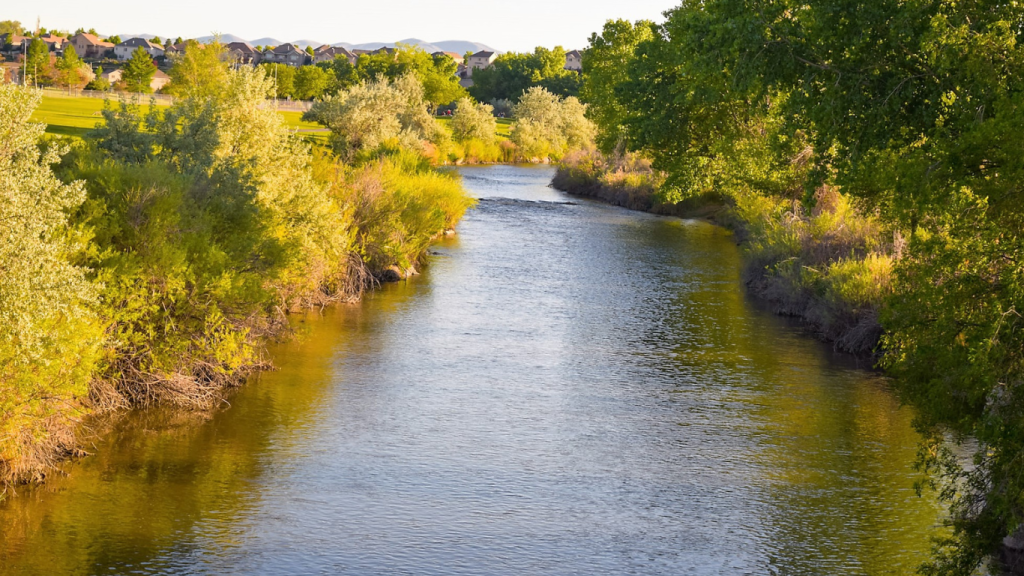
Recreation in Harmony With Mother Nature
South Jordan is serious about providing plentiful opportunities for outdoor recreation. It boasts over 35 city parks, over 9 miles of trails, 3 fishing ponds, 2 county parks, and fields and courts for a variety of sports.
Preserving natural open space is another priority: The city has more than 250 acres of federally protected land, mostly along the Jordan River corridor. While this space is reserved for wildlife and wetlands, another 30 acres are under development as the Mystic Springs Wetland Educational Area. When complete, it will allow the public to enjoy the Jordan River and its wetlands. Plans call for educational areas, an ADA trail, foot paths, and lookout points for viewing the local flora and fauna.
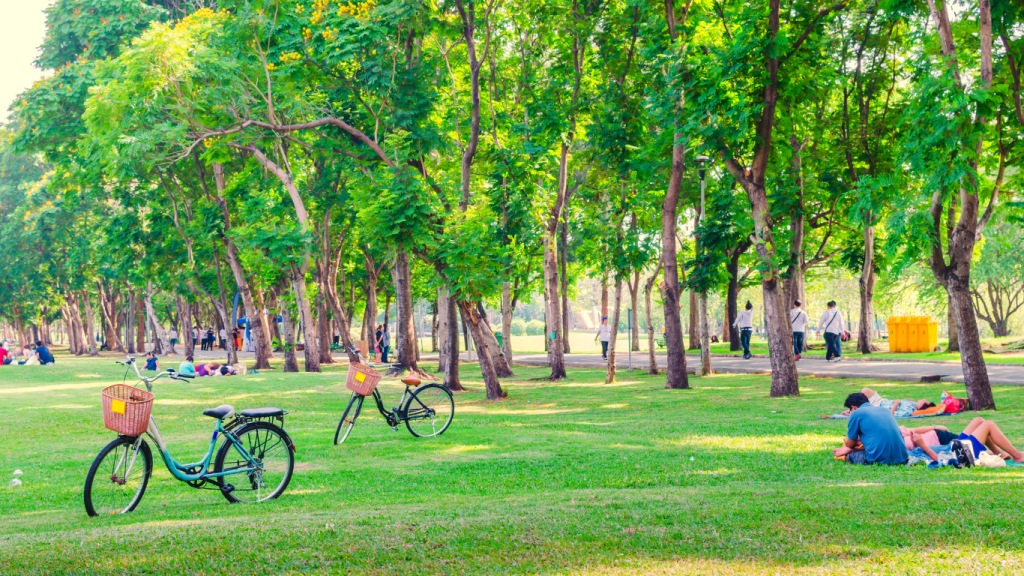
A Skier’s Paradise
If you love to ski, it would be hard to find a better winter wonderland than South Jordan. The city, whose elevation ranges from 4,278 to 6,463 feet above sea level, lies in the Salt Lake Valley between the 9,000-foot peaks of the Oquirrh Mountains and the 12,000-foot peaks of the Wasatch Mountains. It gets 60 inches of snow a year, which is plenty to keep a handful of notable ski resorts busy. The ones closest to South Jordan, with their approximate distances from the city, are:
- Snowbird, 16 miles
- Alta Ski Area, 18 miles
- Solitude Mountain Resort, 25 miles
- Brighton Resort, 27 miles
- Sundance, 36 miles
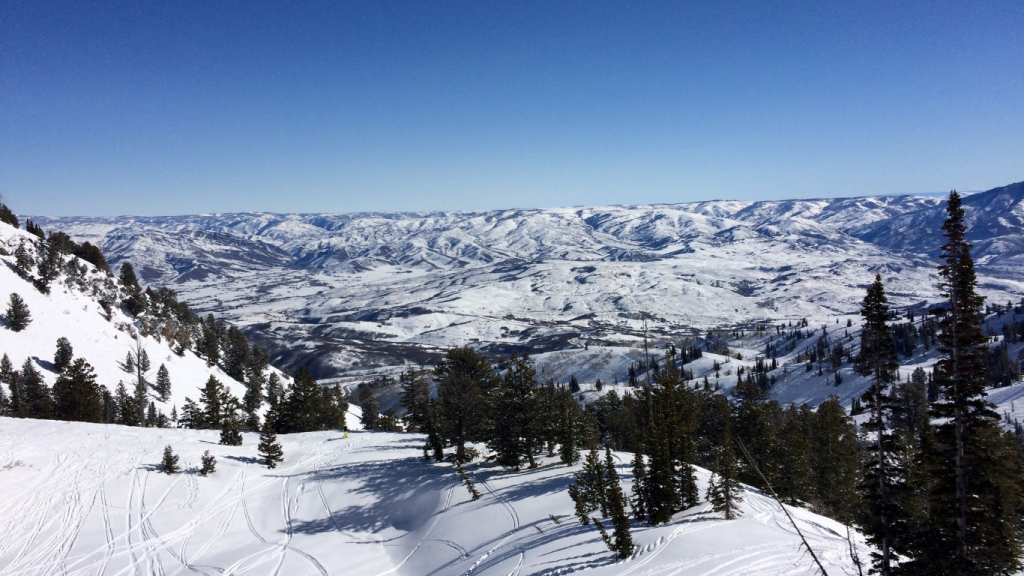
Community Spirit and Family Fun
The main event of the year that South Jordan residents of all ages look forward to is SoJo Summerfest. Which kicks off the season a little early for several days spanning late May to early June. Held at South Jordan City Park, it includes a carnival, a parade, a root beer garden, a fireworks display, and a music festival with performances on two evenings. Other attractions include a car show, a BMX Bike entertainment, a Butterfly Encounter, fire foam fun, chalk art, and an Artisan Vendor Market.
On Friday evenings in June and July, everyone’s welcome to see free Movies in the Moonlight at Oquirrh Shadows Park. All are family-friendly although a few may not be appropriate for young children. Food trucks are on-site to provide meals and snacks.
On Saturdays from August to October, you can take your family to buy fresh fruit and vegetables — plus homemade pickles, preserves, and baked goods — at the South Jordan Farmers Market. Along with sampling your delicious purchases, you’ll have a good time chatting with friendly local farmers and enjoying free weekly crafts.
Throughout the year, kids can find plenty of cool things to explore at the Ninja Kidz Action Park in South Jordan, which has escape rooms, a trampoline park, giant slides, ziplines, and a laser maze, among other attractions and temptations. Fun venues nearby include the Museum of Natural Curiosity in Lehi and the Scales and Tails Utah petting zoo in Kearns.

Retiring a Religious Stereotype
If you’re not a member of the Church of Jesus Christ of Latter-day Saints, or a member of any religion at all, you may wonder if you’d fit into an overwhelmingly LDS community like you imagine South Jordan to be. Relax. While Utah has a sizable presence of LDS members — not surprising for a state that was settled by Mormons — they are no longer in the majority, and South Jordan is an interesting example of this phenomenon.
According to a 2023 study published in The Salt Lake Tribune, most Utahns do not identify as members of the LDS faith. The survey of nearly 2,000 Utah adults revealed that only 42% consider themselves to be LDS members, although the figure the church reports on its membership rolls is 64.3%. This highlights the gap between officially belonging to a religious organization and identifying with it in your day-to-day life.
South Jordan distinguished itself as the first city in the world to have two LDS temples, the Jordan River Utah Temple and the Oquirrh Mountain Utah Temple. But it also has the Sri Ganesha Hindu Temple of Utah, where anyone is welcome to visit and learn about Hinduism and Indian culture.
BestPlaces reports that 75.4% of South Jordan’s residents are religious, which means that nearly a quarter are not. Of the religious majority, about 61% are LDS, 9% are Catholic, and more than 4% identify with other Christian denominations: Baptists, Episcopalians, Lutherans, Pentecostals, Methodists, Presbyterians, and more. Jews, Muslims, Hindus, and Buddhists also make their homes in South Jordan, which, like Utah as a whole, is becoming a true melting pot of the faithful and the secular.

Daybreak: Pros and Cons of the Giant Master-Planned Community
There’s a saying in South Jordan that illustrates the significant impact of this mammoth development that encompasses the entire western half of the city: “You either live in Daybreak or not-Daybreak.”
The largest master-planned community in Utah’s history, Daybreak has gone through several stages under different developers, starting with Rio Tinto Kennecott in 2001. Construction began in 2004 on a 4,126-acre site that was originally a copper, gold, and silver mine. The idea was to use former mining land sustainably and employ smart growth development practices. Over a quarter of the site was preserved as open space, and all Daybreak homes are Energy Star certified.
Today, Larry H. Miller’s real estate company is partnering with the City of South Jordan to build a downtown center within Daybreak and relocate the Salt Lake Bees baseball team and its stadium to the community. Once completed, Daybreak could include over 20,000 residential units and approximately 9.1 million square feet of retail and commercial space.
Realtor.com notes that in June 2024, Daybreak had 392 homes for sale with asking prices ranging from $285,000 to $2.5 million. The median listing price was $587,000, down 3% from the previous year, and the median sale price was $503,500.
Looking at the South Jordan real estate market overall, 547 homes for sale were listed at prices ranging from $285,000 to $3.1 million. The median listing price was $649,900, down 4.4% from the same time a year ago, and the median sale price was $518,600.
Since there’s not much difference in price between a home in Daybreak and one in another part of the city, deciding whether to buy in Daybreak comes down to the lifestyle you prefer. Salt Lake area Realtor Greg Spackman, who has spent a lot of time in Daybreak, both with and without his family, says people either love or hate living here — there’s no in between. On his YouTube channel, he offers these insights about living in Daybreak:
Pros:
- Walkability
- Highly rated schools
- Good variety of restaurants, grocery stores, and places to shop
- The Trax Redline train system run by the Utah Transit Authority. It stops in Daybreak, the University of Utah, and downtown Salt Lake City, so you can commute to school or work without having to drive.
- Friendly, warm, receptive residents who are neighborly and ready to strike up a conversation
- The Salt Lake Bees, a popular AAA baseball team, are moving to Daybreak.
Cons:
- A homeowners’ association (HOA) that many residents consider overbearing
- Too much traffic
- The HOA transfer fee, which is 0.5% of the transfer price of the home, whether newly built or existing. Although the buyer typically pays this, it is negotiable.
- The HOA fee, which runs about $135 a month (including high-speed internet) for a single-family house and can be higher for a condo or townhome
- Narrow streets and alleys
- Small yards, although there are lots of parks and trails to enjoy. People tend to spend most of their leisure time outdoors, so if you’re a homebody, Daybreak may not be for you.
